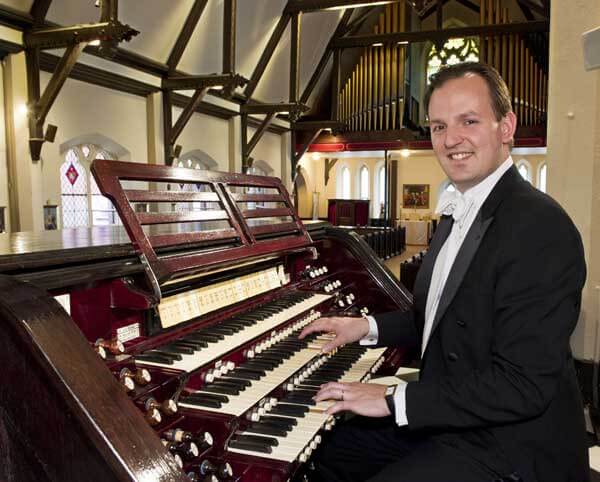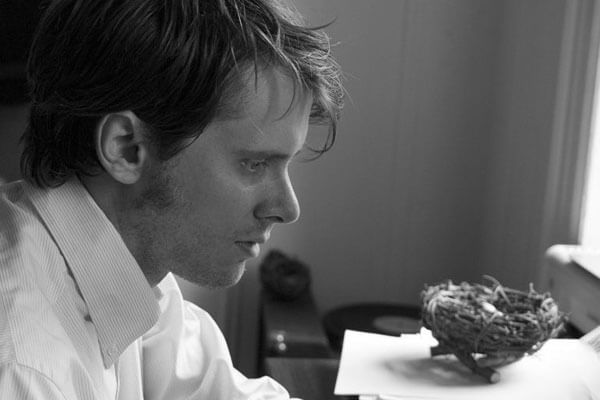 French twentieth-century organ composer Maurice Duruflé and contemporary American composer Gregory Spears seem like an odd pair. But on November 14, 2012, works of the two composers were on exhibition, showcasing two modern settings of the requiem at the French-gothic inspired Park Avenue Christian Church in New York City. In this case, both composers were inspired by something ancient while sustaining their own ability to creatively innovate. As I entered the church, the sanctuary was half filled with darkness. The other half was lit by candles flickering against the stone window frames and stained glass that lined the nave. The whole setting seemed to be an appropriate (yet completely unplanned) meditation, in light of the devastating damage by Hurricane Sandy that had ripped through the New York region just a couple of weeks before.
French twentieth-century organ composer Maurice Duruflé and contemporary American composer Gregory Spears seem like an odd pair. But on November 14, 2012, works of the two composers were on exhibition, showcasing two modern settings of the requiem at the French-gothic inspired Park Avenue Christian Church in New York City. In this case, both composers were inspired by something ancient while sustaining their own ability to creatively innovate. As I entered the church, the sanctuary was half filled with darkness. The other half was lit by candles flickering against the stone window frames and stained glass that lined the nave. The whole setting seemed to be an appropriate (yet completely unplanned) meditation, in light of the devastating damage by Hurricane Sandy that had ripped through the New York region just a couple of weeks before.

Organist David Enlow (photo credit: davidenlow.com)
Not long after I sat in my pew, organist David Enlow began the first passage of the Duruflé Requiem (1947). The men of the Sanctuary Choir of Park Avenue Christian joined, singing the legato Kyrie with Duruflé’s beautifully embedded Gregorian chant. Duruflé was in good hands that night, as the choir, who sang in the loft up and behind the audience, gave an impassioned performance led by conductor Paul Vasile, who helped to outline the well-crafted counterpoint woven against the chant. Mezzo-soprano soloist Jacqueline Horner-Kwiatek sang the Pie Jesu with pristine line and baritone Joe Chappel’s bold and robust voice rang well in the not-so-cavernous space during the Libera Me.
After intermission, Gregory Spears took to the stage to conduct his Requiem, a newer interpretation of the classic text. His unique setting blends “aspects of minimalism and early music” into a “secular requiem” using Latin and two French dialects that today are considered all but obsolete.

Composer Gregory Spears (photo credit: gregoryspears.com)
The piece began with the low drones of male voices accompanied by the echoing duet of two harps, played by Christopher Williams and Jacqueline Kerrod. Later, recorders and the lovely floating voice of soprano Jolle Greenleaf rose above the static texture to help evolve the story singing “It is now a long time ago, When hens had teeth.” Combining both the secular and sacred traditions, the second movement, Requiem Aeternam, began without pause. These sorts of contrasts – recurring rhythmic and melodic passages – helped to pace this work between the ethereal and the narrative.
Spears setting only uses fragments of the Latin requiem text in conjunction with text from fairy tales written in Breton (a Celtic-French language) and Middle French. It was originally commissioned as a dance, Hen’s Teeth, “loosely inspired by the Breton fairy tale Pipi Menou et les Femmes Volantes (Pipi and the Flying Women).” These texts, along with the traditional requiem verses, come together as a reflective oratorio, something akin to David Lang’s Little Match Girl Passion.
The performance was accompanied by a video designed by Meredith James and Michael Wang. The video features a single lit candle, set by a window, that slowly evolves – from daylight into darkness – in split-screen format, in order to contrast the two ideas. Because the video transformed slowly, it was easy to come back to it during the duration of the work and notice the evolution. However, it was hard to divert attention from the music making, which was so pristine that it might have been easily mistaken for the recording.
The ensemble was made up of six solo voices from the talented early music ensemble TENET, paired with an odd but well-fit mix of modern and early-music instruments. Among the instruments were a troubadour harp, pedal harp, baroque viola, and electric organ, as well as chimes and recorders that were played by tenors Lawrence Lipnik and Kurt-Owen Richards.
Much like the Duruflé, Spears’ requiem works as a series of meditative musical events, quite different from the rocket-fueled romantic concert requiems written by Verdi, Mozart or Fauré (not that there’s anything wrong with those). Rather, Spears combines and contrasts musical ideas, periods, and cultures into a rich narrative that tells the story through prayer and meditation.
–
Daniel Garrick is an emerging composer, active performer, writer and creative thinker residing in Jersey City. Follow him on Twitter: @realfaustus.


















